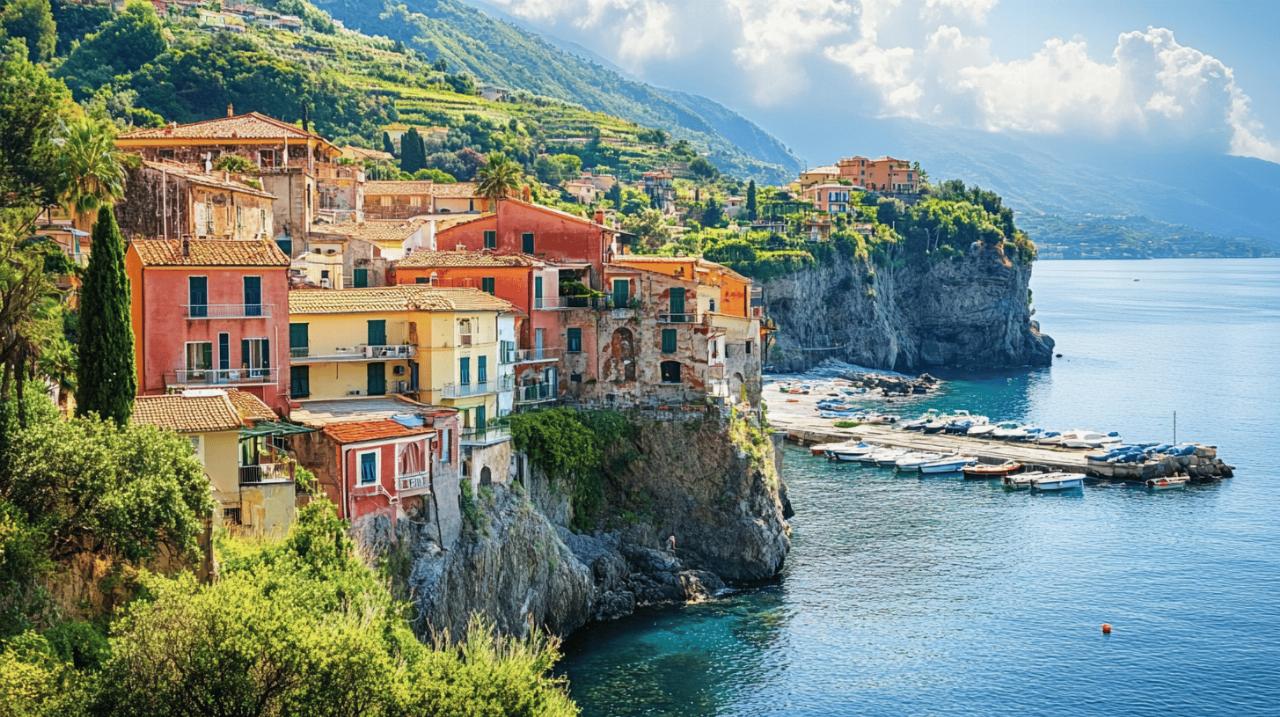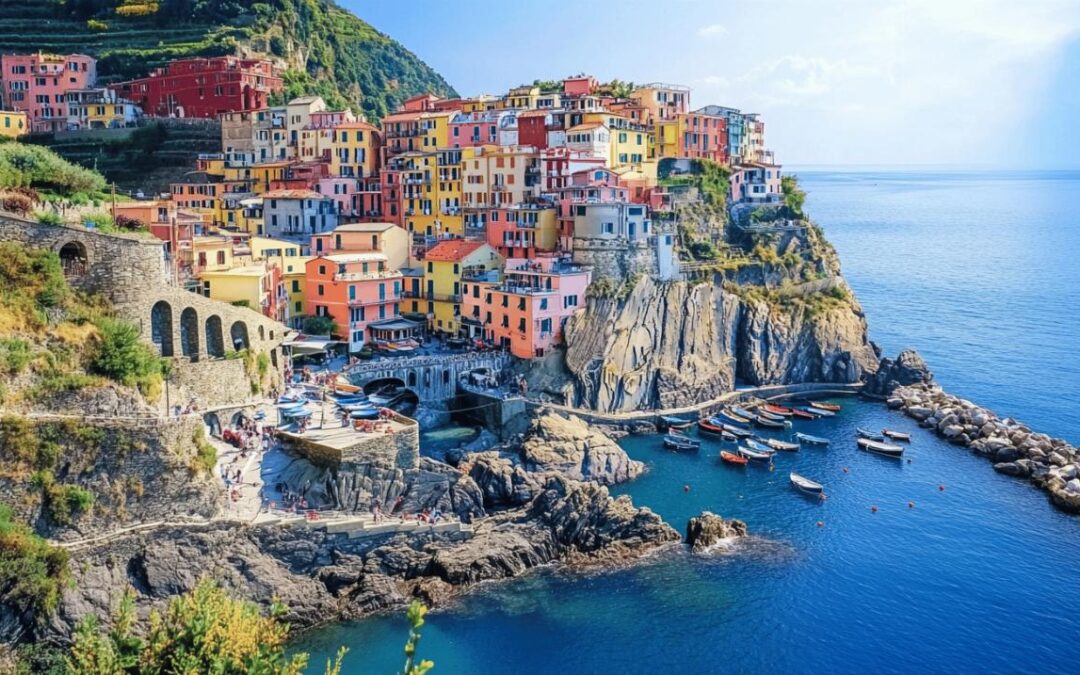Italy’s timeless charm beckons senior travellers with its rich history, stunning landscapes, and warm hospitality. Whether you’re dreaming of peaceful countryside retreats or cultural explorations of lesser-known towns, Italy offers countless opportunities for mature travellers seeking authentic experiences away from the typical tourist paths. As specialists at Ameropa Viaggi have discovered through years of helping seniors navigate this beautiful country, thoughtful planning can transform a good Italian holiday into an unforgettable journey tailored to your needs and interests.
Planning your peaceful Italian getaway
The key to a rewarding Italian adventure begins with strategic timing. For seniors, avoiding the intense summer heat and crowds can make all the difference in your enjoyment. May and early October offer ideal conditions with pleasant temperatures, fewer tourists, and often lower prices. These shoulder seasons allow you to appreciate Italy’s treasures without the stress of navigating through throngs of summer visitors.
Best quiet seasons for elderly travellers
Spring brings mild weather and blooming landscapes across Italy, with temperatures comfortable enough for extended explorations. Early autumn offers similar advantages, with the added bonus of harvest festivals in many regions. Winter in southern regions like Sicily and Puglia remains relatively mild, making them excellent choices for those seeking to escape colder climates at home while enjoying significantly reduced visitor numbers at major attractions.
Lesser-known destinations with senior-friendly facilities
While Rome and Florence hold undeniable appeal, consider exploring charming towns like Trento in Trentino, which offers cultural richness with a more relaxed atmosphere. Locorotondo in Puglia charms visitors with its circular layout, white-washed walls, and flower-adorned streets without the steep hills found in more famous destinations. Mantua in Lombardy features remarkable Renaissance architecture and artificial lakes, with mostly flat terrain making it particularly accessible for those with mobility considerations.
Booking accommodation with accessibility in mind
When travelling through Italy as a senior, accommodation choices significantly impact your overall experience. Hotels generally offer advantages over apartments, providing central locations, essential amenities like lifts, housekeeping services, and English-speaking staff who can assist with local recommendations and any special needs that might arise during your stay.
Finding centrally located lodgings with lift access
Many historic Italian buildings have been beautifully converted into hotels while adding modern conveniences like lifts. When booking, specifically inquire about accessibility features rather than assuming their presence. Properties within walking distance of main attractions and transport hubs save valuable energy for actual sightseeing rather than commuting. Additionally, ensure your accommodation offers reliable Wi-Fi for staying connected with family and accessing important travel information.
Countryside stays with transport connections
For those drawn to Italy’s pastoral landscapes, consider rural accommodations that maintain connections to transport networks. Many agriturismi (farm stays) now offer shuttle services to nearby towns or train stations. When choosing a countryside retreat, verify if car hire with a driver is available for day excursions, as this provides flexibility without the stress of navigating unfamiliar roads. Some establishments even coordinate shared transport with other guests heading to popular destinations, creating both convenience and opportunities for socialising.
Getting around Italy with ease
Transportation planning forms the backbone of a stress-free Italian journey for seniors. Italy’s extensive rail network connects major cities and many smaller towns, offering a comfortable alternative to driving. For transfers between airports, cruise ports and accommodations, pre-arranged services eliminate uncertainty and physical strain.
Navigating the Italian rail network
Italian trains provide an efficient way to travel between destinations while enjoying scenic views. The high-speed Frecciarossa, Frecciargento and Italo trains connect major cities with modern, comfortable carriages featuring accessible facilities. Regional trains reach smaller towns, though they operate at a more leisurely pace. Consider purchasing tickets in advance through the Trenitalia website or at station kiosks, and allow extra time for connections. Many stations offer assistance services for senior travellers when arranged in advance.
Local transport options for day trips
Once settled in a location, explore local transport options for day excursions. Many cities offer hop-on-hop-off bus tours providing commentary on major sights while minimising walking distances. In Rome, Florence, and Milan, Uber provides a safe alternative with transparent pricing and pre-set routes. For exploring rural areas or multiple sites in one day, private car tours with English-speaking drivers combine convenience with local expertise. These services, while more expensive than public transport, offer personalised pacing and the ability to modify routes based on energy levels and interests.
Pacing yourself throughout your journey
One of the most important strategies for senior travellers is adopting a measured approach to sightseeing. The Italian philosophy of ‘dolce far niente’ – the sweetness of doing nothing – perfectly complements a well-designed travel schedule that balances activities with adequate rest.
Creating a balanced itinerary with rest days
Resist the temptation to schedule activities for every moment of your trip. Intersperse busy sightseeing days with relaxation days where you might simply enjoy a lengthy lunch, people-watch from a café, or explore the immediate neighbourhood of your accommodation. This approach not only prevents exhaustion but often leads to delightful discoveries and more authentic local experiences. Consider spending at least three nights in each location to minimise the fatigue associated with frequent packing and travel between destinations.
Morning activities versus evening explorations
Take advantage of natural energy patterns by scheduling more demanding activities in the morning when most seniors feel most energetic. Many museums and archaeological sites open early, offering cooler temperatures and smaller crowds. Afternoons can be reserved for leisurely lunches followed by rest at your accommodation. Early evenings bring cooler temperatures and the charming Italian passeggiata – the traditional evening stroll where locals socialise – providing a perfect opportunity to experience authentic Italian culture at a gentle pace.
Making the most of senior discounts
 Italy offers numerous financial advantages for mature travellers, with many attractions providing significant discounts for seniors. Taking advantage of these concessions can substantially reduce your overall travel budget while enhancing your experience through specialised services.
Italy offers numerous financial advantages for mature travellers, with many attractions providing significant discounts for seniors. Taking advantage of these concessions can substantially reduce your overall travel budget while enhancing your experience through specialised services.
Museum and attraction concessions for over-65s
Most state-run museums and archaeological sites across Italy offer reduced entry fees for visitors aged 65 and over, with some providing completely free admission. Always carry your passport as proof of age, as driving licences from non-EU countries may not be accepted. Beyond the financial savings, many sites also offer priority entry for senior visitors, allowing you to bypass lengthy queues. Some larger museums provide guided tours specifically designed for mature visitors, focusing on major highlights with plenty of seating opportunities throughout.
Transport savings with regional passes
Regional transport authorities often offer discounted passes for seniors. In major cities, look for tourist cards that combine public transport with museum entries at reduced rates. When travelling by train, the Carta Argento provides a 15% discount on most tickets for travellers over 60. This card requires a one-time purchase but quickly pays for itself if you plan multiple train journeys. Similarly, many local bus companies offer reduced fares for seniors, though policies vary by region, so inquire at local tourist information offices for the most current offerings.
Health considerations for mature travellers
Maintaining wellbeing while travelling requires advance preparation and ongoing awareness. Italy’s excellent healthcare system provides reassurance, but proper insurance and preventative measures remain essential for senior travellers.
Selecting comprehensive travel insurance
Investment in thorough travel insurance is non-negotiable for seniors visiting Italy. Look for policies specifically designed for mature travellers that cover pre-existing conditions without excessive premiums. Consider supplemental medical evacuation coverage like Medjet, which ensures transport to your preferred hospital at home rather than just the nearest adequate facility. When comparing policies, verify coverage for trip cancellation, medical emergencies, prescription replacement, and extended stays necessitated by recovery from illness or injury.
Staying well in the Mediterranean climate
The Mediterranean climate requires specific health precautions. Hydration becomes particularly important, especially when exploring under the sun. Carry a refillable water bottle, as Italian tap water is generally safe and public fountains are abundant in most towns. The summer sun can be intense, so wear lightweight, breathable clothing, apply high-SPF sunscreen regularly, and consider scheduling outdoor activities during morning or late afternoon hours. Italian meal timing differs from many northern European and North American patterns, with lunch typically served from 1-3 PM and dinner rarely beginning before 8 PM. Adapt by carrying small snacks to maintain energy between meals.
Packing light for cobbled streets
Thoughtful packing makes navigating Italy’s historic centres significantly easier. Many Italian towns feature charming but challenging terrain, including cobblestone streets, steps, and hills that can quickly turn heavy luggage into a burden.
Essential items for varying Italian weather
Pack adaptable clothing layers to accommodate Italy’s variable climate. Light cardigans or jackets work for cool evenings even in summer. Include at least one modest outfit for visiting religious sites, where covered shoulders and knees are required. Comfortable, broken-in walking shoes with good support and non-slip soles are essential for negotiating uneven surfaces safely. Consider bringing a small umbrella, prescription medications in their original containers with copies of prescriptions, adapters for electronic devices, and photocopies of important documents stored separately from the originals.
Smart luggage choices for historic towns
Select luggage with mobility in mind. Wheeled suitcases with four rotating wheels navigate smoother surfaces well but consider a backpack or over-shoulder bag for extremely uneven areas. Pack only what you can comfortably manage alone, remembering that assistance may not always be available in smaller towns or train stations. Distribute weight between multiple smaller bags rather than one large, unwieldy case. For souvenirs and purchases made during your journey, bring a packable extra bag or leave space in your existing luggage to avoid struggling with additional items on your return journey.
Connecting with locals despite language barriers
Engaging with local culture enriches your Italian experience immeasurably. While English is widely spoken in tourist areas, attempting even basic Italian demonstrates respect and often results in warmer interactions and insider recommendations.
Key Italian phrases every senior should know
Mastering a few essential phrases fosters goodwill and practical assistance. Start with basics like greetings, please, thank you, and simple questions about directions or recommendations. Italians appreciate visitors who make an effort to communicate in their language, even imperfectly. Learning numbers helps with understanding prices, and phrases related to dietary restrictions or medical needs provide important safety information. Consider downloading a translation app with offline capabilities for more complex conversations, but remember that speaking slowly and clearly in simple sentences often communicates more effectively than relying entirely on technology.
Finding English-speaking assistance when needed
While embracing the local language adds depth to your experience, know where to find English support when necessary. Hotel concierges typically speak English and can assist with reservations, recommendations, and practical needs. Tourist information offices in most towns offer English services and provide maps and guides specifically designed for international visitors. Medical facilities in larger cities and tourist areas generally have English-speaking staff, particularly for emergency services. For specialised needs or more complex situations, services like local guides or transport arranged through companies like Ameropa Viaggi provide both linguistic support and cultural context that enhances your Italian adventure while ensuring your specific requirements are understood and met.

